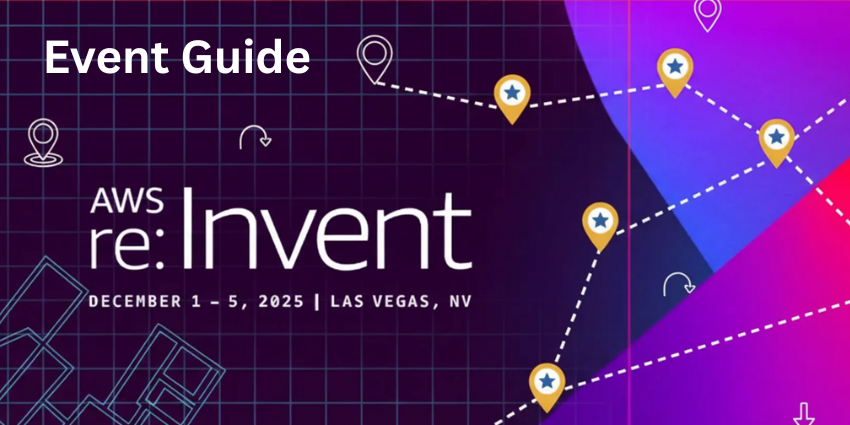Some days it feels like every CX leader woke up, stretched, and decided, “Yep, we’re doing AI now.” Gartner’s already predicting that 80% of enterprises will be using GenAI APIs or apps by 2026, which honestly tracks with the number of “AI strategy updates” landing in inboxes lately.
But customers? They’re not exactly throwing confetti about it.
In fact, Gartner found 64% of people would rather companies didn’t use AI for service, full stop. Plus, only 24% of customers trust AI with anything messy, like complaints, policy decisions, those emotionally-charged “your system charged me twice” moments. So there’s this weird split: companies rushing forward, customers dragging their heels, and everyone quietly hoping the bots behave.
That’s the real issue, honestly. AI doesn’t warn you it’s going wrong with an error code, at least not all the time. It goes sideways in behavior. A chatbot invents a refund rule. A voice assistant snaps at a vulnerable caller. A CRM-embedded agent quietly mislabels half your complaints as “general enquiries.”
This is why AI behavior monitoring and real AI governance oversight are really becoming the only guardrails between scaling CX AI, and watching it drift into places you really don’t want headlines about.
Why AI Governance Oversight Is Critical for CX Success
Most CX teams think they’re rolling out “smart automation,” but what they’re actually doing is handing decision-making power to systems they don’t fully understand yet. That’s just where the industry is right now. The tech moved faster than the manuals.
This is exactly why AI behavior monitoring, AI governance oversight, and all the messy parts of CX AI oversight are suddenly showing up in board conversations. It’s pattern recognition. The problems are becoming glaringly obvious. We’ve all seen a bot make a weird decision and thought, “Wait… why did it do that?”
Ultimately, we’re starting to bump against a very real trust ceiling with AI and automation in CX.
KPMG’s global study found 83% of people expect AI to deliver benefits, but more than half still don’t trust it, especially in markets that have seen its failures up close.
Unfortunately, business leaders aren’t making it easier to trust these systems either.
Here’s where things get dicey. PwC’s 2025 research shows only a small fraction of companies feel “very effective” at AI risk monitoring or maintaining an inventory of their AI systems. That’s not just making customers skeptical, it’s opening the door to countless problems with security, data governance, and even AI compliance.
What Off-the-Rails AI Looks like in CX
It’s funny, when people talk about AI risk, they usually imagine some Terminator-style meltdown. In reality, CX AI goes off the rails in more subtle ways:
Hallucinations & fabricated information
Hallucinations sound like this mystical AI thing, until your bot confidently invents a cancellation policy that’s never existed and suddenly, you’re handing out refunds like coupons.
2025 observability research keeps pointing to the same pattern: hallucinations usually come from messy or contradictory knowledge bases, not the model itself. A tiny change in wording, an outdated policy page, and suddenly the AI “helpfully” fills in the blanks.
This is where AI drift detection becomes so important. Hallucinations often creep in after small updates to data pipelines, not major system changes.
Tone errors, “cold automation” & empathy failures
Efficiency without empathy doesn’t win customers.
Brands aren’t losing customers because AI is wrong, they’re losing them because the AI feels cold. It encourages negative response. Research found 42% of Brits admit they’re ruder to chatbots than humans, and 40% would pay extra just to talk to a real person during a stressful moment.
Tone errors don’t even have to be outrageous, just off-beat. This is absolutely part of CX AI oversight, whether companies like it or not.
Misclassification & journey misrouting
Smart routing can absolutely transform CX. It might even be the secret to reducing handling times. But if your intent model falls apart:
- Complaints get tagged as “general enquiries.”
- Cancellation requests bounce between departments.
- High-risk customers get routed to low-priority queues.
- Agents spend half their time rewriting what the AI misread.
When companies adopt agentic systems inside CRMs or collaboration platforms (Salesforce, Teams, Slack), misclassification gets even harder to catch because the AI is now initiating actions, not just tagging them. Behavioral drift in these areas builds up subtly.
Bias & fairness issues
Bias is the slowest-moving train wreck in CX because nothing looks broken at first.
You only notice it in patterns:
- Certain accents triggering more escalations,
- Particular age groups receiving fewer goodwill gestures,
- Postcode clusters with mysteriously higher friction scores.
A survey last year found 63% of consumers are worried about AI bias influencing service decisions, and honestly, they’re not wrong to be. These systems learn from your historical data, and if your history isn’t spotless, neither is the AI.
Policy, privacy & security violations
This is the failure mode that’s getting more painful for business leaders:
- A bot accidentally quoting internal-only pricing.
- A Teams assistant pulling PII into a shared channel.
- A generative agent surfacing sensitive case notes in a CRM suggestion.
None of these will necessarily trigger a system alert. The AI is technically “working.” But behaviorally, it’s crossing lines that no compliance team would ever sign off on.
Drift & degradation over time
Here’s the thing almost nobody outside of data science talks about: AI drifts the same way that language, processes, or product portfolios drift. Gradually. Quietly.
Models don’t stay sharp without maintenance. Policies evolve. Customer context changes. And then you get:
- Rising recontact rates,
- Slowly dipping FCR scores,
- Sentiment trending down month over month.
Organizations that monitor drift proactively see significantly higher long-term ROI than those who “set and forget.” It’s that simple.
Behavior Monitoring Tips for AI Governance Oversight in CX
AI is making decisions, influencing outcomes, and shaping journeys, yet for some reason, companies still aren’t paying enough attention to what goes on behind the scenes. It takes more than a few policies to make AI governance oversight in CX work. You need:
A Multi-Layer Monitoring Model
With AI, problems rarely start where you’d think. If a bot is rude to a customer, it’s not a chat app that’s usually the problem, it’s something underneath. That’s why you need to monitor all the layers:
- Data layer: Here, you’re watching for data freshness, schema changes, versioning of your knowledge base, inconsistent tags across channels, and omni-data alignment across channels. Poor data quality costs companies billions a year, but unified data reduces service cost and churn.
- Model layer: At this level, useful metrics include things like intent accuracy, precision/recall, hallucination rate, and AI drift detection signals like confidence over time. Think of this as your AI’s cognitive health check.
- Behavior layer: Here, you’re looking at escalation rates, human override frequency, low-confidence responses, weird tool-call chains, anomaly scores on tone, sentiment, and word patterns.
- Business layer: This is where you see how AI activity correlates to results like CSAT/NPS scores, re-contact rate, churn levels, cost-per resolution, and so on.
The Right CX Behavior Metrics
If you forced me to pick the non-negotiables, it’d be these:
- Hallucination rate (and how often humans correct it)
- Empathy and politeness scores
- Sentiment swings inside a single conversation
- FCR delta pre- and post-AI deployment
- Human override and escalation rates
- Percentage of interactions where the AI breaks policy
- Cost-per-resolution
If you only track “containment” or “deflection,” you’re not monitoring AI properly.
A Holistic Approach to Observability
The teams doing this well have one thing in common: end-to-end traces that show the whole story.
A trace that looks like this: Prompt → Context → Retrieved documents → Tool calls → Model output → Actions → Customer response → Feedback signal
If you can’t replay an interaction like a black box recording, you can’t meaningfully audit it, and auditing is core to AI ethics and governance, especially with regulations tightening.
You also need:
- Replayable transcripts
- Decision graphs
- Versioned datasets
- Source attribution
- Logs that a regulator could read without laughing
If your logs only say “API call succeeded,” you’re not looking deep enough.
Alerting Design & Behavior SLOs
Most orgs have SLOs for uptime. Great. Now add SLOs for behavior, that’s where AI governance oversight grows up.
A few examples:
- “Fewer than 1 in 500 interactions require a formal apology due to an AI behavior issue.”
- “0 instances of PII in AI-generated responses.”
- “No more than X% of high-risk flows handled without human validation.”
Alerts should trigger on things like:
- Sharp drops in sentiment
- Spikes in human overrides
- Unusual tool-call behavior (especially in agentic systems)
- Data access that doesn’t match the pattern (teams/slack bots can be wild here)
Instrumentation by Design (CI/CD)
If your monitoring is an afterthought, your AI will behave like an afterthought.
Good teams bake behavior tests into CI/CD:
- Regression suites for prompts and RAG pipelines
- Sanity checks for tone and policy alignment
- Automatic drift tests
- Sandbox simulations (Salesforce’s “everse” idea is a great emerging model)
- And historical replay of real conversations
If you wouldn’t deploy a major code change without tests, why would you deploy an AI model that rewrites emails, updates CRM records, or nudges refund decisions?
AI Governance Oversight: Behavior Guardrails
Monitoring AI behavior is great, controlling it is better.
Behavior guardrails are a part of AI governance oversight that transform AI from a clever experiment into something you can trust in a live customer environment.
Let’s start with some obvious guardrail types:
- Prompt & reasoning guardrails: You’d be amazed how much chaos disappears when the system is told: “If unsure, escalate.” Or “When conflicted sources exist, ask for human review.”
- Policy guardrails Encode the rules that matter most: refunds, hardship cases, financial decisions, vulnerable customers. AI should never improvise here. Ever.
- Response filters: We’re talking toxicity, bias, PII detection, brand-voice checks, the things you hope you’ll never need, but you feel sick the moment you realize you didn’t set them up.
- Action limits Agentic AI is powerful, but it needs clear boundaries. Limits like maximum refund amounts or which CRM fields it can access matter. Microsoft, Salesforce, and Genesys all call this “structured autonomy”, so freedom in a very safe box.
- RAG governance guardrails: If you’re using retrieval-augmented generation, you have to govern the source material. Versioned KBs. Chunking rules. Off-limits documents.
Use connectors (like Model Context Protocol-style tools) that enforce: “Use only verified, compliant content. Nothing else.”
The Automation / Autonomy Fit Matrix
The other part of the puzzle here (aside from setting up guardrails), is getting the human AI balance right. Before any AI touches anything customer-facing, map your flows into three buckets:
- Low-risk, high-volume: FAQs, order status, password resets, shipping updates. This is where automation should thrive.
- Medium-risk: Straightforward refunds, address changes, simple loyalty adjustments. Great fit for AI + guardrails + a human-on-the-loop to catch outliers.
- High-risk / irreversible: Hardship claims. Complaints with legal implications. Anything involving vulnerable customers. Here, AI is an assistant, not a decision-maker.
To keep these AI governance oversight boundaries solid, implement a kill-switch strategy that includes when to turn off an agent, pause a queue or workflow, or freeze updates to avoid further damage.
The Role of Humans in AI Governance Oversight
There’s still this strange myth floating around that the endgame of AI in CX is “no humans required.” I genuinely don’t know where that came from. Anyone who’s watched a real customer interaction knows exactly how naive that is. AI is remarkable at scale and speed, but when a conversation gets emotional or ambiguous or ethically tricky, it still just acts like software. That’s all it is.
AI governance oversight in CX still needs humans, specifically:
- Humans-in-the-loop (HITL): Any high-risk decision should get a human’s eyes first. Always. HITL isn’t slow. It’s safe. Good AI behavior monitoring will tell you exactly where HITL is mandatory: wherever the AI hesitates, contradicts itself, or hits a confidence threshold you wouldn’t bet your job on.
- Human-on-the-loop (HOTL): Here, the human doesn’t touch everything; they watch the system, the trends, and the anomalies. They’re basically the flight controller. HOTL teams look at anomaly clusters, rising override rates, sentiment dips, and the subtle cues that tell you drift is beginning. They’re the early-warning system that no model can replace.
- Hybrid CX models: We know now that the goal isn’t to replace humans. It’s to let humans handle the moments where trust is earned and let AI tidy up everything that doesn’t require emotional intelligence. Stop striving for an “automate everything” goal.
Another key thing? Training humans to supervise AI. You can build the best monitoring stack in the world, but if your agents and team leads don’t understand what the dashboards mean, it’s pointless.
Humans need training on:
- How to read drift signals
- How to flag bias or tone issues
- How to escalate a behavior problem
- How to give structured feedback
- And how to use collaboration-embedded ai assistants without assuming they’re always right
Embedding AI Governance Oversight into Continuous Improvement
AI behaves like a living system. It evolves, it picks up quirks, it develops strange habits based on whatever data you fed it last week. If you don’t check in regularly, it’ll wander off into the digital woods and start making decisions nobody signed off on.
That’s why continuous improvement isn’t a ceremony; it’s self-defense. Without it, AI governance oversight becomes a rear-view mirror instead of an early-warning system.
Commit to:
- Continuous testing & red-teaming: If you’ve never run a red-team session on your CX AI, you’re genuinely missing out on one of the fastest ways to uncover the weird stuff your model does when nobody’s watching. Red-teamers will shove borderline prompts at the system, try to inject malicious instructions, and stress-test policy boundaries, to show you gaps before they turn into real problems.
- Tying monitoring to predictive CX & customer feedback: If you want to know whether your AI changes are helping or quietly sabotaging the customer journey, connect them to your predictive KPIs. Watch what happens to CSAT, NPS, predicted churn scores, likelihood-to-repurchase, and customer effort.
- Knowledge base integrity review: 80% of hallucinations probably start in the knowledge base, not the model. One policy update slips through without review, or a well-meaning team member rewrites an FAQ with different wording, and suddenly your AI is making decisions based on contradictory inputs. Regular KB governance should become as normal as code review.
- Data quality & lineage checks: The model can only behave as well as the data it’s seeing, and CX data is notoriously chaotic: different teams, different taxonomies, different CRMs duct-taped together over several years. To keep AI honest: consolidate profiles into a CDP with one “golden record,” enforce schemas, and define lineage so you can actually answer, “Where did this value come from?”
The organizations doing this well treat AI like any other adaptable system. They run a full loop: Monitor → Detect → Diagnose → Fix → Test → Redeploy → Report. Simple as that.
AI Governance Oversight: The Only Way to Scale CX AI Responsibly
If there’s one thing that’s become clear while watching CX teams wrestle with AI over the past two years, it’s this: the technology isn’t the hard part. The model quality, the workflows, and the integrations all come with challenges, but they’re solvable.
What really decides whether AI becomes a competitive advantage or a reputational hazard is how well you understand its behavior once it’s loose in the world.
That’s why AI governance oversight, AI behavior monitoring, guardrails, kill switches, and human review models matter more than whatever amazing feature your vendor demoed last month. Those safeguards are what keep the AI aligned with your policies, your ethics, your brand personality, and, frankly, your customers’ tolerance levels.
You can’t prevent every wobble. CX is too complicated, and AI is too adaptive for that illusion. But you can design a system that tells you the moment your AI starts drifting, long before the customer feels the fallout.
CX is just going to keep evolving. Are you ready to reap the rewards without the risks? Read our guide to AI and Automation in Customer Experience.







